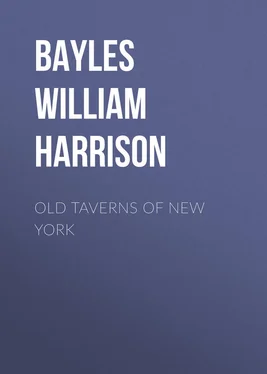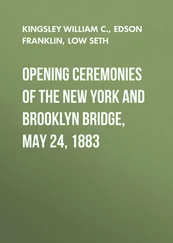William Bayles - Old Taverns of New York
Здесь есть возможность читать онлайн «William Bayles - Old Taverns of New York» — ознакомительный отрывок электронной книги совершенно бесплатно, а после прочтения отрывка купить полную версию. В некоторых случаях можно слушать аудио, скачать через торрент в формате fb2 и присутствует краткое содержание. Жанр: foreign_antique, foreign_prose, на английском языке. Описание произведения, (предисловие) а так же отзывы посетителей доступны на портале библиотеки ЛибКат.
- Название:Old Taverns of New York
- Автор:
- Жанр:
- Год:неизвестен
- ISBN:нет данных
- Рейтинг книги:3 / 5. Голосов: 1
-
Избранное:Добавить в избранное
- Отзывы:
-
Ваша оценка:
- 60
- 1
- 2
- 3
- 4
- 5
Old Taverns of New York: краткое содержание, описание и аннотация
Предлагаем к чтению аннотацию, описание, краткое содержание или предисловие (зависит от того, что написал сам автор книги «Old Taverns of New York»). Если вы не нашли необходимую информацию о книге — напишите в комментариях, мы постараемся отыскать её.
Old Taverns of New York — читать онлайн ознакомительный отрывок
Ниже представлен текст книги, разбитый по страницам. Система сохранения места последней прочитанной страницы, позволяет с удобством читать онлайн бесплатно книгу «Old Taverns of New York», без необходимости каждый раз заново искать на чём Вы остановились. Поставьте закладку, и сможете в любой момент перейти на страницу, на которой закончили чтение.
Интервал:
Закладка:
After a few years the name of Philip’s house underwent a change. This may have been the result of a sort of evolutionary process, induced by Philip, who erected in front of his house a sign on which was painted a white horse on a dark background, very conspicuous. The house became known as the Sign of the White Horse or the White Horse Tavern.
Some lively scenes were connected with the little tavern. One dark night in the spring of 1643, farmer Jan Damen, whose house was just beyond the present Wall Street near Broadway, drank deep in Philip’s house, and was in such a condition that Geraerdy thought it prudent to guide him home, which act of benevolence cost him dearly. Damen must have been in a mood that threatened trouble, for Geraerdy had taken the precaution to draw his sword from its scabbard and carry it himself. At the house Damen’s serving man, armed with a long knife, resisted his master’s entrance. Damen used the scabbard as a weapon and also secured a knife, and in the fight which ensued Geraerdy was, as the surgeon declared, dangerously wounded, Damen having struck him in the dark under the shoulder blade.
It was a dramatic and semi-tragic scene when “Black John,” who hailed from the seaport town of Monnikendam, near Amsterdam, one morning, as they were at the house of Philip Geraerdy, addressed Ensign Hendrick Van Dyck, saying: “Brother, my service to you,” to which the ensign answered: “Brother, I thank you.” “Black John” did not hand over the can, but instead struck the ensign with it on his forehead so that blood flowed, saying that that was his Monnikendam fashion, and threw him over on his back. This, it is related, was done without having words or dispute of any kind.
Geraerdy became a sergeant in the burgher troops, and while keeping a tavern was also a trader and a man of business. Besides his own language he could speak both Dutch and English, acting occasionally as an interpreter. He succeeded so well that in a few years he built for himself a substantial house on that part of his lot fifty or sixty feet down from the corner on Stone Street.
When Governor Peter Stuyvesant arrived, in May, 1647, he found New Amsterdam, to use an expression of the present day, “a wide open town.” Before the close of the month he issued an order requiring that all places where liquor was sold should remain closed on Sunday before two o’clock in the afternoon, and, in case of preaching in the fort, until four o’clock, – this, under penalty of the owners being deprived of their occupation, and besides being fined six Carolus guilders for each person who should be found drinking wine or beer within the stated time, excepting only travellers and those who were daily customers, fetching the drinks to their own homes; and that all such places should be closed every night at the ringing of the bell about nine o’clock. In issuing this order he says: “Whereas we have experienced the violence of our inhabitants, when drunk, their quarrelling, fighting and hitting each other, even on the Lord’s day of rest, of which we have ourselves witnessed the painful example last Sunday, in contravention of law, to the contempt and disgrace of our person and office, to the annoyance of our neighbors, and to the disregard and contempt of God’s holy laws and ordinances,” etc.
In March, 1648, he found that further action was necessary. He declared that one-fourth of the houses had been turned into taverns for the sale of brandy, tobacco and beer, and that they were detrimental to the welfare of the community; he therefore issued a set of rules for their regulation. No new tap-houses should be opened without the unanimous vote of the Director and Council. Those who had been tapsters could continue as such for four years at least, but in the meantime, should seek some other means of livelihood, so as not to be dependent on it. Orders as to closing at nine o’clock every night and on Sundays were repeated. Tapsters were to report all fights or disorderly conduct in their places, and physicians were to report all cases where they were called on to dress wounds received in such disturbances. This does not necessarily indicate that New Amsterdam was at this time a disorderly place, for like New York of the present day, it was a cosmopolitan city. The population at that time was not over five hundred souls, and it has been declared that eighteen different languages were spoken by the inhabitants.
Some time previous to the year 1648 Daniel Litschoe established an inn on what is now Pearl Street in the outskirts of the town, which became the resort of the country people coming in from Long Island. Litschoe came out to New Amsterdam with the earliest settlers as ensign in the military service of the Dutch. He was with Stuyvesant at Beverwyck and on his order hauled down the lord’s colors. He also went out with Stuyvesant in the expedition against the Swedes on the Delaware as lieutenant.
The tavern seems to have been a good-sized building, for it is spoken of as “the great house,” but this is to be taken as in comparison with its neighbors. It had at least a quarter of an acre of ground attached to it, and stood back some little distance from the street. A part of the lot is now covered by No. 125 Pearl Street. In the spring of 1651, Litschoe leased this house to Andries Jochemsen, who kept it as a tavern or ale house for many years and had lots of trouble with the authorities. He would tap on Sundays and after nine o’clock, and his house was the resort of disorderly persons. After keeping tavern for some years in a house which he had built just outside the city wall, Litschoe purchased a lot inside the wall between it and the house he had resided in some years before, and here he, and after his death in 1662, his wife, Annetje, kept a tavern for many years.
When Sir Henry Moody came from Virginia in 1660 to exchange ratifications of the treaty to regulate commerce between that colony and New Netherland he was received with all the usual diplomatic honors. Two members of the council, under escort of halberdiers, were sent “to compliment him in his lodgings,” and Moody, appearing in the fort, presented his credentials. He resided a considerable time at the house of Daniel Litschoe and when he left the city he failed to settle his score, for which his library left at the house was sold. More people came into the city over the river road from the Long Island ferry than from any other direction, and Litschoe’s tavern near the city gate was an inviting resting place. It was one of the stations where fire-buckets were kept for use in cases of emergency.
The city wall, above mentioned, was a line of palisades straight across the island along the northerly side of the present Wall Street, passing through the present Trinity Churchyard. On the inside of the palisades was an embankment and a ditch. It was built in the year 1653, when England and Holland were at war and New Amsterdam was threatened by the New England colonists. Through this line of defence there were two gates, the land-gate at the present junction of Broadway and Wall Street and the water-gate at the river road or present Pearl Street.
Peter Cock added much to the piquancy of the gossip of the taverns and the town when, in 1653, probably no longer a soldier, he brought suit against Annetje Cornelissen Van Vorst, claiming the fulfillment of a promise of marriage. The case occupied the time and attention of the Court of Burgomasters and Schepens at a great many sessions, statements and counter-statements being presented to the Court, who, considering the case too large for them, sent it, with the papers, to the Director and Council for their decision. It was sent back to the Court of Burgomasters and Schepens, with a recommendation to appoint a committee to examine the papers and report. The final decision, pronounced May 18, 1654, was that the promise was a binding contract. From this decision Annetje appealed, but it was confirmed. In some way Annetje obtained a release, at any rate, she married November 11, 1656, Claes Jansen Van Purmerendt, a tobacco planter of Paulus Hook. Peter consoled himself with another Annetje, for on June 13, 1657, he married Annetje Dirks, of Amsterdam.
Читать дальшеИнтервал:
Закладка:
Похожие книги на «Old Taverns of New York»
Представляем Вашему вниманию похожие книги на «Old Taverns of New York» списком для выбора. Мы отобрали схожую по названию и смыслу литературу в надежде предоставить читателям больше вариантов отыскать новые, интересные, ещё непрочитанные произведения.
Обсуждение, отзывы о книге «Old Taverns of New York» и просто собственные мнения читателей. Оставьте ваши комментарии, напишите, что Вы думаете о произведении, его смысле или главных героях. Укажите что конкретно понравилось, а что нет, и почему Вы так считаете.












